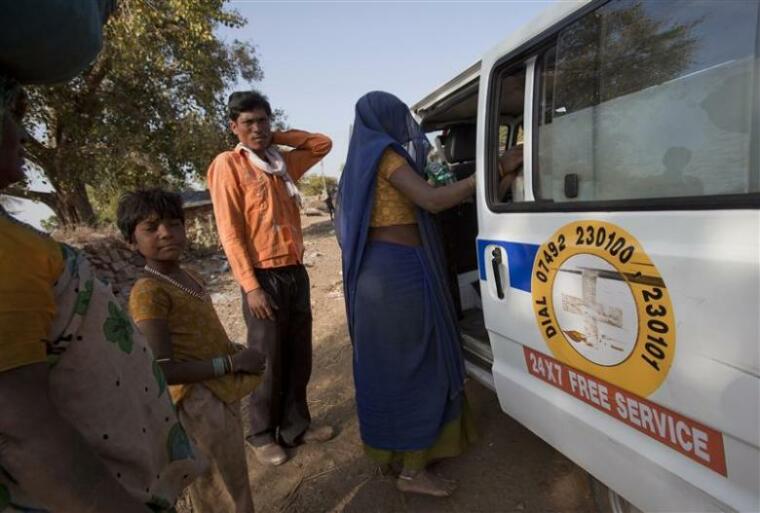Report: 15.6 million abortions were performed in India in just one year

As many as 15.6 million abortions were performed in India in 2015, with the majority of women taking pills at home without adequate counseling, according to the latest study conducted by the Guttmacher Institute.
The findings of the study revealed that India has an abortion rate of 47 per 1,000 women aged 15–49, which is similar to the abortion rate in other South Asian countries.
The latest figures reveal that abortions are 22 times more common than the government's estimate of less than 700,000 terminations by focusing on state-run hospitals and clinics.
Seventy-eight percent of the abortions were performed outside of health facilities, suggesting that women are taking the procedure into their own hands.
"Women in India face considerable challenges trying to obtain abortion care, including the limited availability of abortion services in public health facilities," the Guttmacher Institute's investigator Susheela Singh, said in a statement, according to Reuters.
"Our findings suggest that a shortage of trained staff and inadequate supplies and equipment are the primary reasons many public facilities don't provide abortion care," she added.
The researchers said that their study was the first of its kind in India, where abortions had been legal up to 20 weeks of pregnancy since 1971. Their estimates were based on data mostly from the 2015 Health Facilities Survey of six Indian states — Assam, Bihar, Gujarat, Madhya Pradesh, Tamil Nadu, and Uttar Pradesh — as well as data from NGO clinics, and abortion pill sales and distribution.
The report, which was published in The Lancet Global Health, also noted that 14 percent of abortions were performed surgically in health facilities, while five percent were performed outside of health facilities using other, typically unsafe methods.
The public sector, which is the main source of health care for rural an poor women, accounted for only a quarter of abortions, partly because many state-run facilities do not perform abortions.
The findings also showed that half of India's 48 imllion pregnancies were unintended, with a third resulting in abortions. Nearly three in four abortions were performed using drugs from chemists and informal vendors, rather than from health facilities where the women are required to undergo proper counseling and health checks.
"Although abortion has been legal under a broad range of criteria in India since 1971, we have never had a reliable estimate of the number occurring until now," said Chander Shekhar from the Mumbai-based International Institute for Population Sciences, which collaborated on the study.
"This new evidence provides policymakers with information that is essential for designing and implementing effective reproductive health care programs," Shekhar added.
 Christians don't have to affirm transgenderism, but they can’t express that view at work: tribunal
Christians don't have to affirm transgenderism, but they can’t express that view at work: tribunal Archaeology discovery: Medieval Christian prayer beads found on Holy Island
Archaeology discovery: Medieval Christian prayer beads found on Holy Island Presbyterian Church in America votes to leave National Association of Evangelicals
Presbyterian Church in America votes to leave National Association of Evangelicals Over 50 killed in 'vile and satanic' attack at Nigerian church on Pentecost Sunday
Over 50 killed in 'vile and satanic' attack at Nigerian church on Pentecost Sunday Ukrainian Orthodox Church severs ties with Moscow over Patriarch Kirill's support for Putin's war
Ukrainian Orthodox Church severs ties with Moscow over Patriarch Kirill's support for Putin's war Islamic State kills 20 Nigerian Christians as revenge for US airstrike
Islamic State kills 20 Nigerian Christians as revenge for US airstrike Man who served 33 years in prison for murder leads inmates to Christ
Man who served 33 years in prison for murder leads inmates to Christ


 Nigerian student beaten to death, body burned over ‘blasphemous’ WhatsApp message
Nigerian student beaten to death, body burned over ‘blasphemous’ WhatsApp message 'A new low': World reacts after Hong Kong arrests 90-year-old Cardinal Joseph Zen
'A new low': World reacts after Hong Kong arrests 90-year-old Cardinal Joseph Zen Iran sentences Christian man to 10 years in prison for hosting house church worship gathering
Iran sentences Christian man to 10 years in prison for hosting house church worship gathering French Guyana: Pastor shot dead, church set on fire after meeting delegation of Evangelicals
French Guyana: Pastor shot dead, church set on fire after meeting delegation of Evangelicals ‘Talking Jesus’ report finds only 6% of UK adults identify as practicing Christians
‘Talking Jesus’ report finds only 6% of UK adults identify as practicing Christians Mission Eurasia ministry center blown up in Ukraine, hundreds of Bibles destroyed: 'God will provide'
Mission Eurasia ministry center blown up in Ukraine, hundreds of Bibles destroyed: 'God will provide' Church holds service for first time after ISIS desecrated it 8 years ago
Church holds service for first time after ISIS desecrated it 8 years ago Burger King apologizes for 'offensive campaign' using Jesus' words at the Last Supper
Burger King apologizes for 'offensive campaign' using Jesus' words at the Last Supper Uganda: Muslims abduct teacher, burn him inside mosque for praying in Christ’s name
Uganda: Muslims abduct teacher, burn him inside mosque for praying in Christ’s name